“For your final exam, I want to give you a unique experience, something that helps relate disease with vectors, so that you can truly have a take-away from our time together this semester.” Those were the words my professor, Dr. Mather, spoke during a pandemic-necessitated webex meeting, and he immediately had my curiosity peaked. We had been studying about disease outbreaks and how they spill over from wildlife, all while living through a pandemic. How much more of an experience did I need? We had learned that everything, including disease, comes from somewhere, and that zoonotic disease detectives were the scientists who figured out the who, what, and where. So, when he asked “who’s up for a tick hunt,” my hand shot up, even though I really had no idea what it entailed. No matter though, because I was going on a tick hunt with the TickGuy.
He explained we would be going on a hunt for blood-engorged female blacklegged ticks, hoping to find them in nature in order to more completely understand this tick’s lifecycle and where diseases like Lyme disease come from. The adult stage tick blood feeds on deer, then detaches when engorged, eventually laying thousands of eggs which hatch into larval ticks that blood-feed on rodents infected with the germs that cause Lyme disease, babesiosis and other diseases, too. We had learned about tick life-cycles and now I was going to see how that cycle got its start. But where do you go to find deer-blood engorged ticks? I guess, you go to the woods!
Truth be told, I was a bit nervous as I drove to the designated meeting spot. I had never intentionally tried to find a tick before, and what if one attached to me? I can barely stand being jabbed by a needle at the doctor’s office, so I definitely didn’t want any ticks latching on to me and possibly transmitting something. I was able to quickly put my fears to rest upon meeting up with Dr. Mather on a small dirt patch just off the road, as I saw him donning his tick PPE (pant cuffs tucked into tall socks, and a Carhartt’s coverall). He was cool, calm, and collected as he got everything ready. He explained that if we found a tick crawling on our clothes we would just quickly grab it with our tweezers and place it in our vial. His confidence eased my anxieties, convincing me that as long as I kept my head on straight, I could handle a tick (or twenty) crawling on me, and I’d be able to catch and remove it almost immediately.
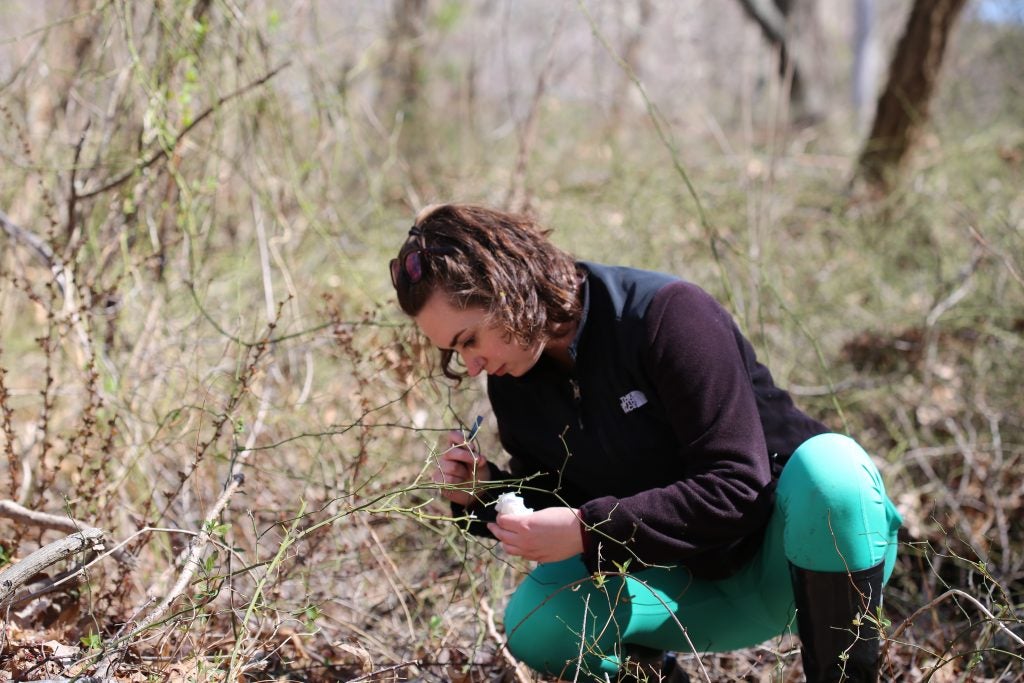
After walking a bit uphill in the wooded area, he told us that we needed to keep our eyes peeled for deer beds. Deer beds? What would that look like? As we walked, Dr. Mather started spotting host-seeking ticks on the twigs of the underbrush. After a minute he asked, “do you see that tick?” I think my squint gave away that I didn’t see it at all. I saw nothing but twigs until he picked the tick up with his fingers to give me a closer look. He identified it as a female in half a second before popping it into one of our collection vials. The process — spot the tick, grab it, pinch it between your thumb and forefinger, then use tweezers to place it in the vial — was clearly something that was second nature to him. I repeated the steps in my head until we came across an adult male deer tick. Dr. Mather wanted to give me the chance to collect the tick, and not wanting to disappoint, I swiftly picked it up with my tweezers, confident, and then dropped it on the leafy ground. Gone.
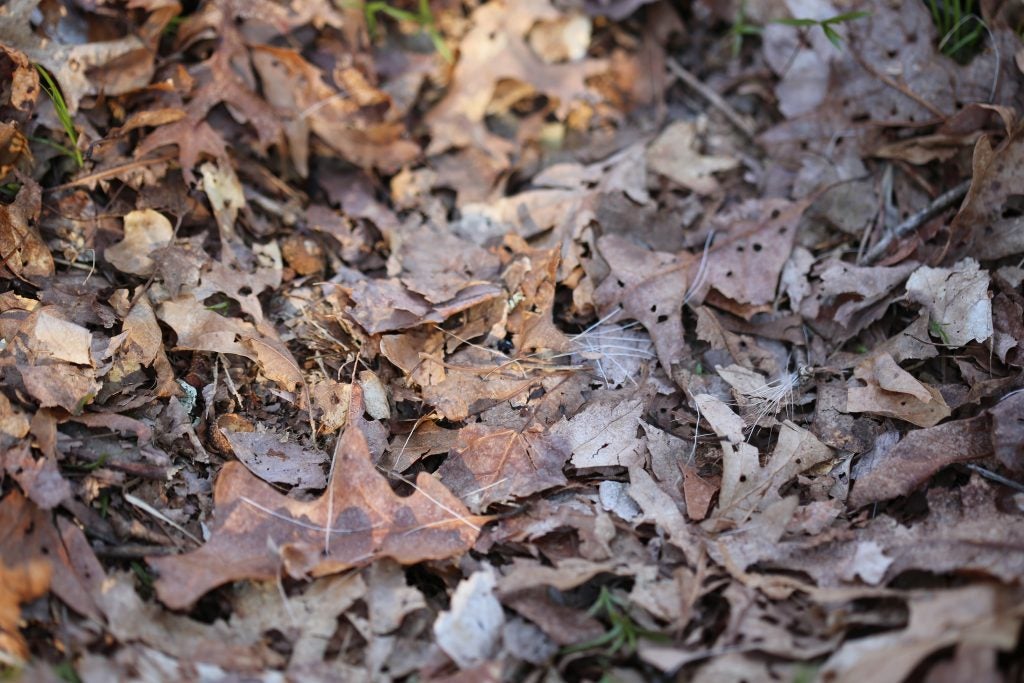
After practicing my technique with a few more ticks, I started to get the basics down and started collecting them without losing and/or dropping them (at least not many). As I kept my eyes low to the ground, eager to find more, Dr. Mather exclaimed “there!” We had come across a deer bed. Before this, I had no idea what a deer bed looked like, but if you’re paying close attention to the leaf-litter on the forest floor you actually can detect small patches of matted-down leaves. It’s subtle but on closer inspection, the presence of coarse white hairs strewn about is confirmation that a deer had been laying there at some point.
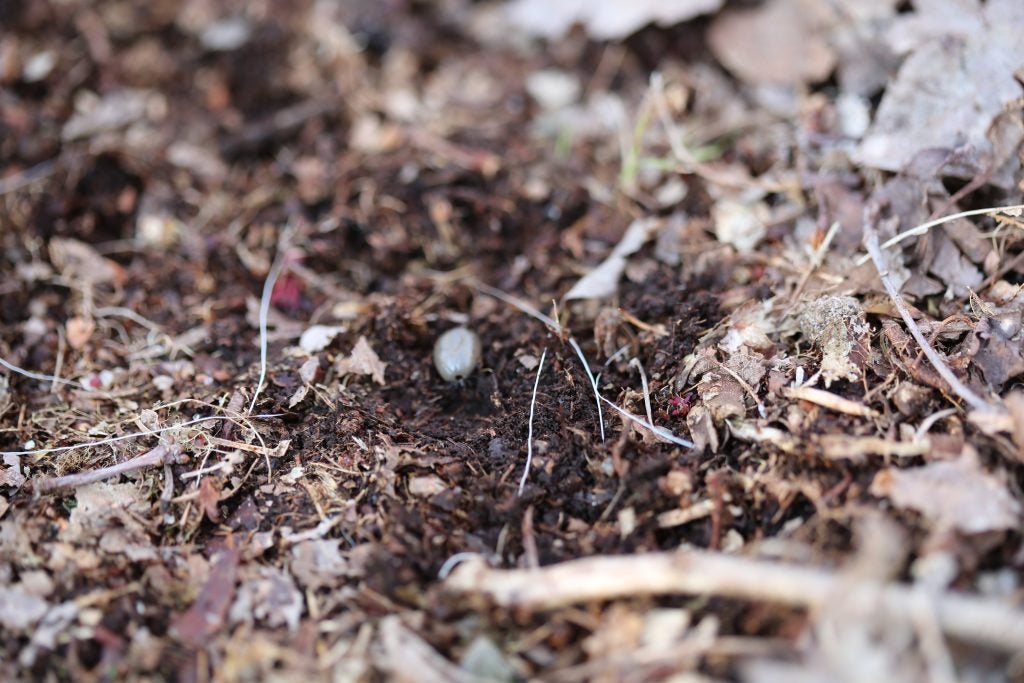
Dr. Mather slowly and methodically began pushing away the matted leaves to reveal the dirt beneath; he quickly exposed a plot about 2 feet x 3 feet where the deer had been laying but no engorged ticks. We moved on and found more deer beds, where we repeated the process of cleaning and gleaning. At about our fifth one, after gently pushing leaves and debris aside, he excitedly exclaimed BINGO, and pointed to a dark, roundish, somewhat shiny object about the size and shape of a plump raisin. It was an engorged female blacklegged tick that, as Dr. Mather explained, had completed its blood meal as the deer was lying there, had detached and now had crawled beneath the leaves to stay hydrated while it began the process of maturing its eggs. At the same site, we found two more engorged ticks.
As we were walking and looking, we saw a deer moving off just ahead, so we headed directly through a patch of dense briars to get to the spot where the deer had come from. Dr. Mather apologized for the agony of the sharp thorns as we tried to high-step over the thicket. He kind of chuckled that he wanted to be sure I had the full-on experience. After maybe 20 yards of torture (now I understand why he wears the Carhartts), we got to the spot, and sure enough found several deer beds. Perfect! With so many deer beds here, I got my own to sort through. Using my fingers to carefully rake away the twigs and leaves just as Dr. Mather had demonstrated, there right before me on the dark ground was what we had come for. I had found my first blood engorged blacklegged tick, just where nature had put it. And then another. And another! Dr. Mather found three more in his deer bed.
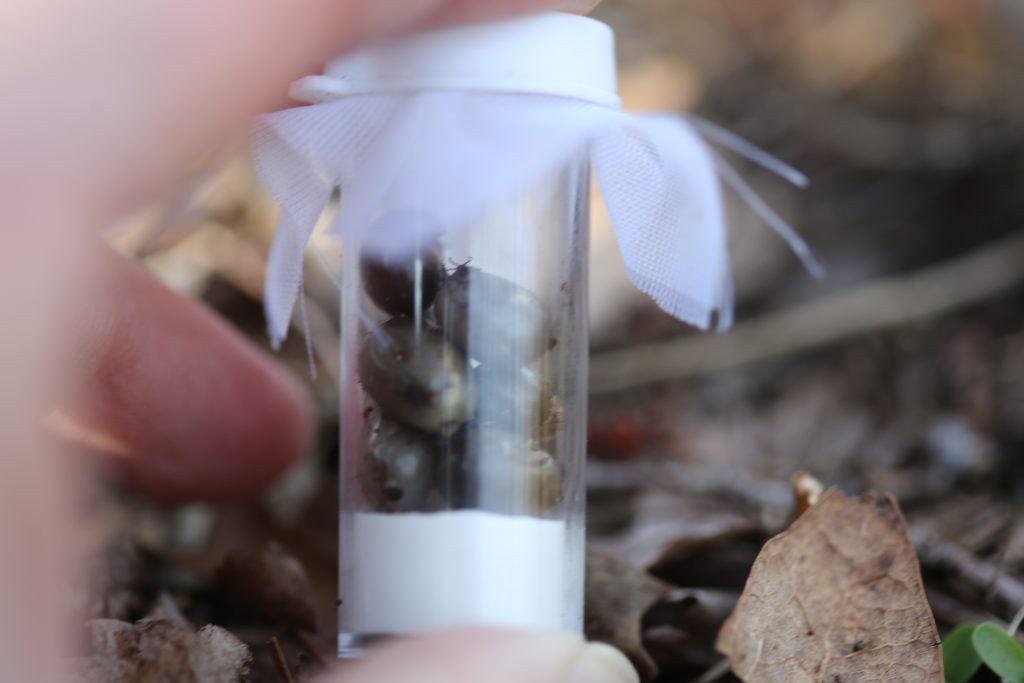
As we started putting them into our vials, I was worried my vial wasn’t going to be able to hold them all. With the vial filled with plump but very alive ticks, I snapped the lid on the vial before snapping a picture with my phone. Then, I handed what previously might have been disgusting but now was my treasure over to Dr. Mather so he could bring them back to the lab. I pitied the poor mouse that might scurry through one of these deer beds after the eggs had been laid and hatched. There must be millions of ticks in just this woodlot. And there was the take-away—why Lyme disease and other tickborne diseases have become so prevalent.
So how was hunting for ticks on a Saturday afternoon during a pandemic quarantine? It was fascinating. I couldn’t believe the sheer magnitude of ticks that were all around us, which was mildly alarming as I realized that I had never noticed them before. The opportunity to conduct field work, and successfully find so many ticks was, actually, thrilling. BEST FINAL EXAM EVER! I understand how this kind of experience might not be for everyone though. So, if you aren’t as excited as I was to experience ticks, then my advice to you, taught to me by the TickGuy, is to always remember to use permethrin on your clothes, and stay on the trail!!
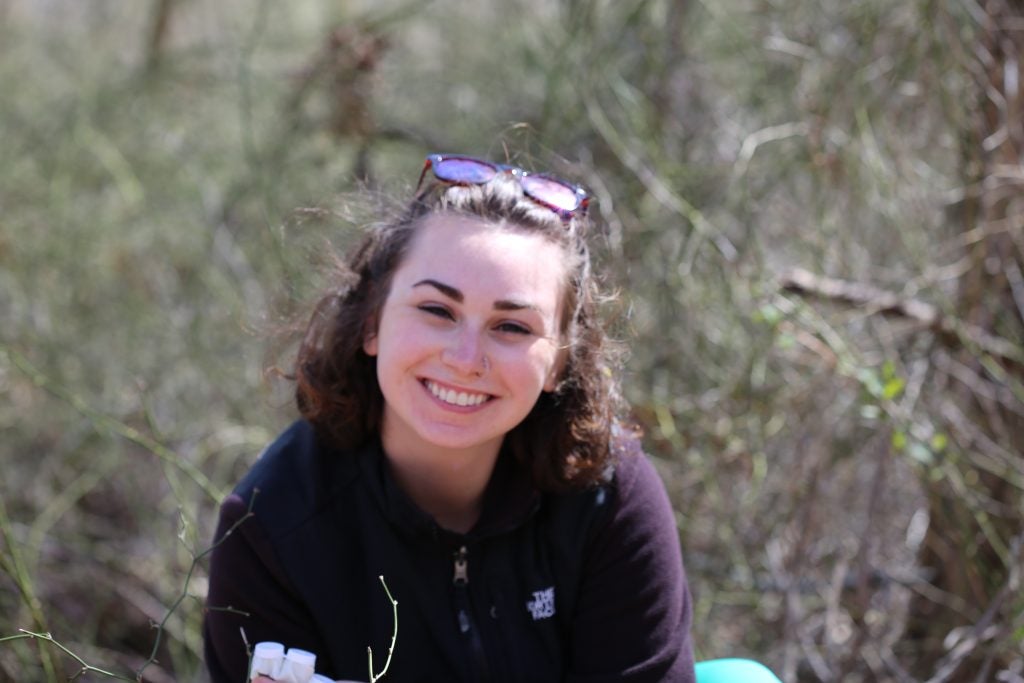
Julia Mcilmail was a student in Dr. Mather’s Wildlife and Human Disease class, and a summer 2020 URI Center for Vector-borne Disease intern. She is now a University of Rhode Island graduate hoping to continue her studies in global health, and maybe entomology.

TickEncounter Gallery Photo: Deer bed with telltale white hairs. 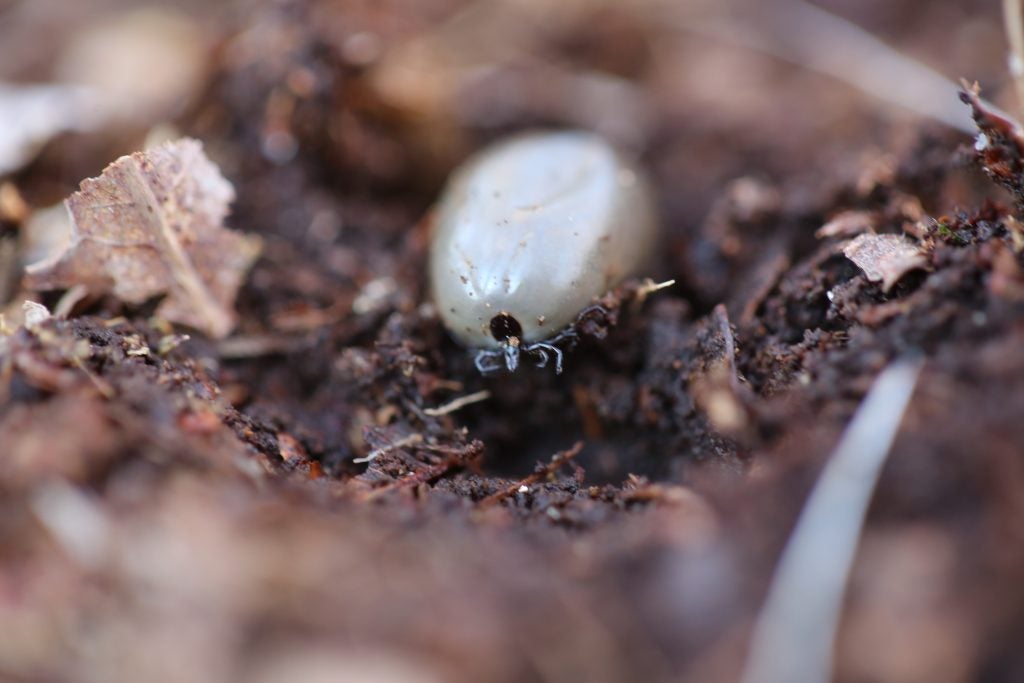
TickEncounter Gallery Photo: Engorged female blacklegged tick found in a deer bed.
